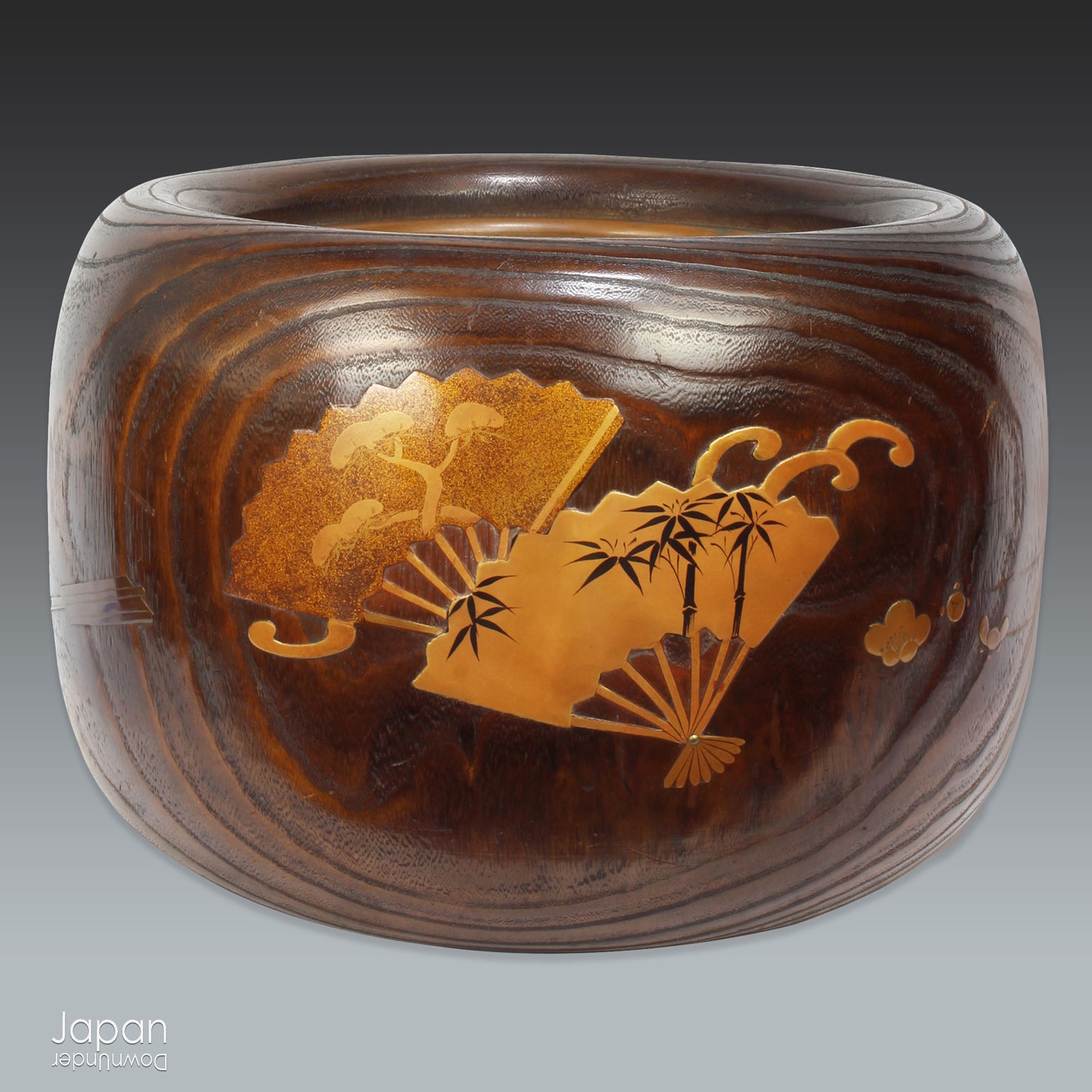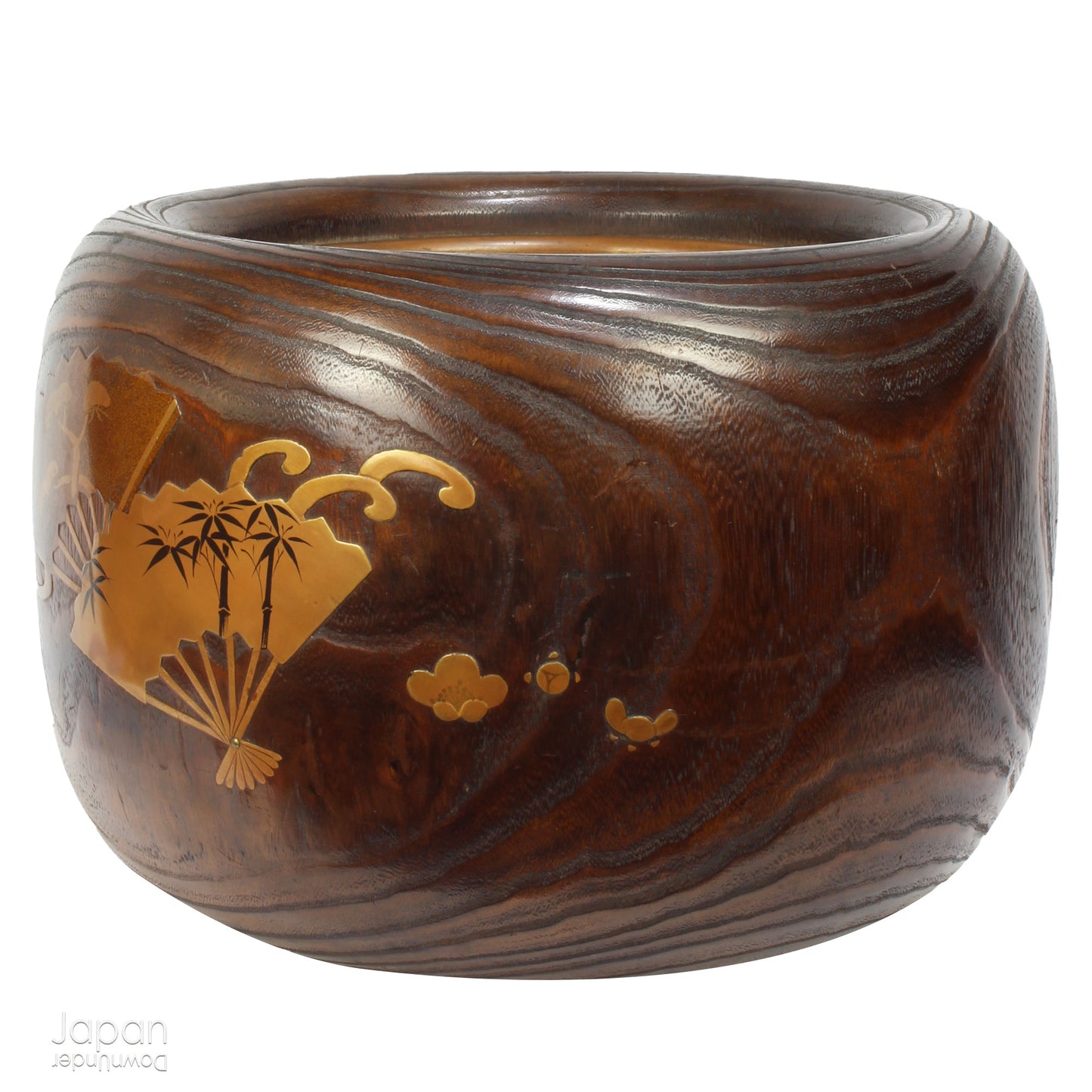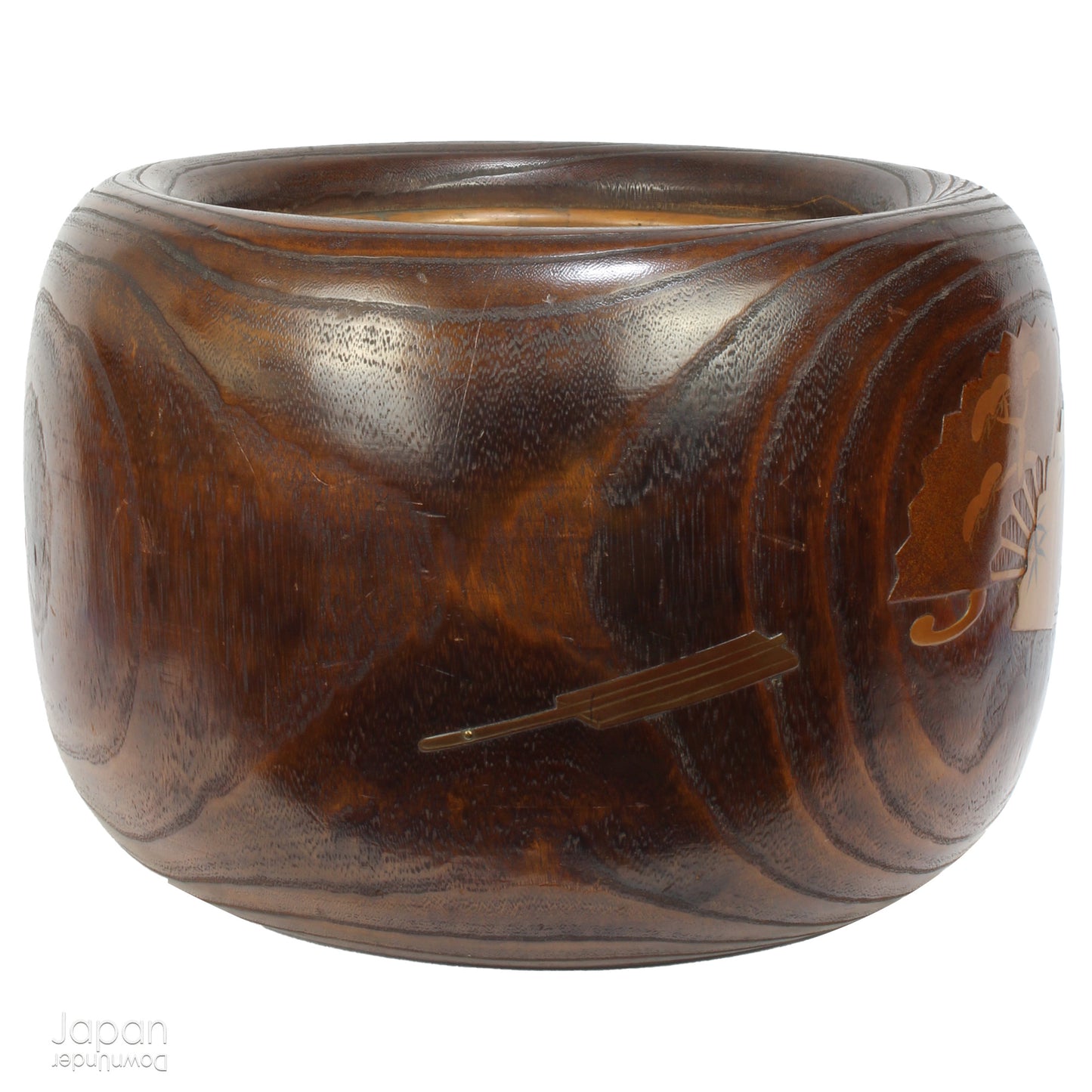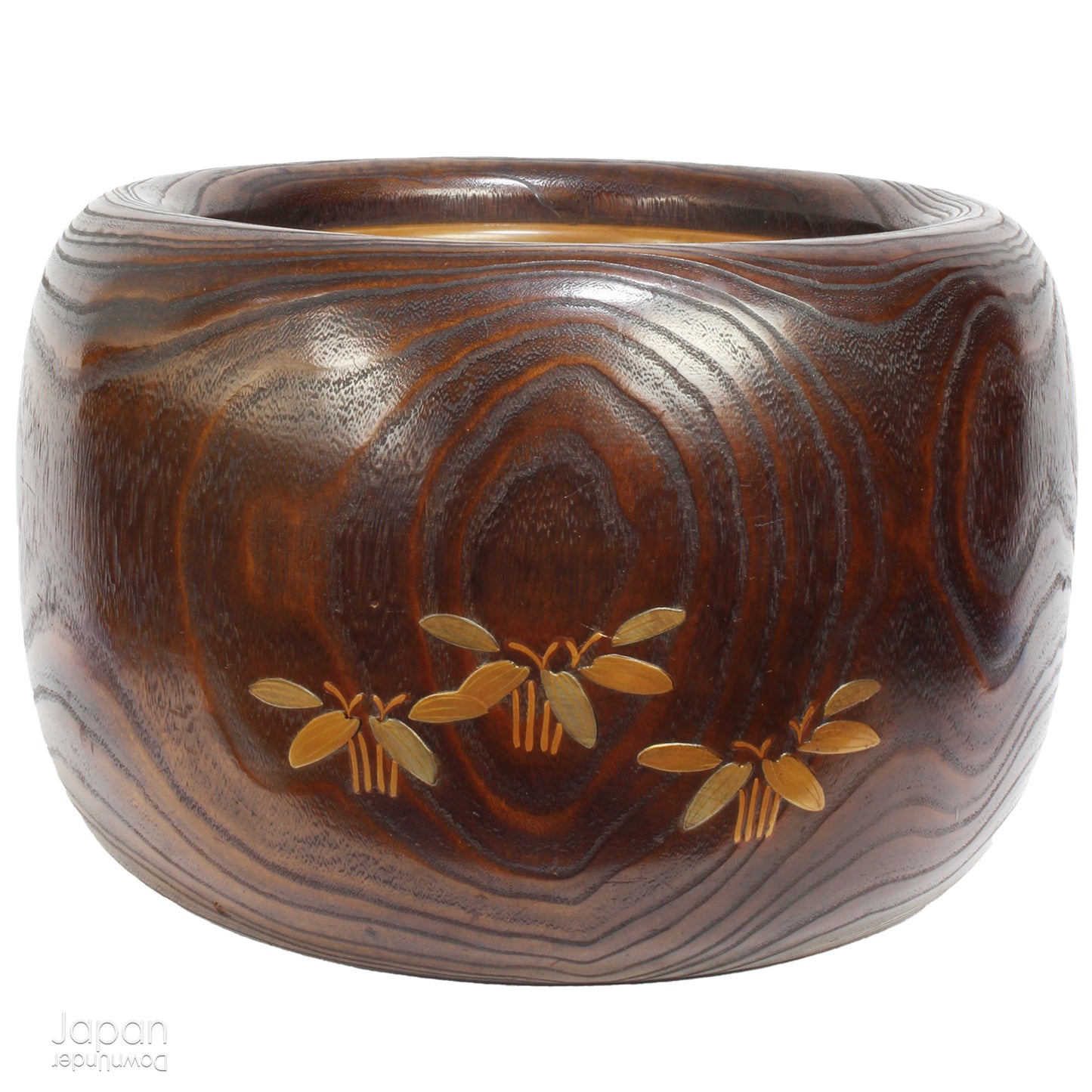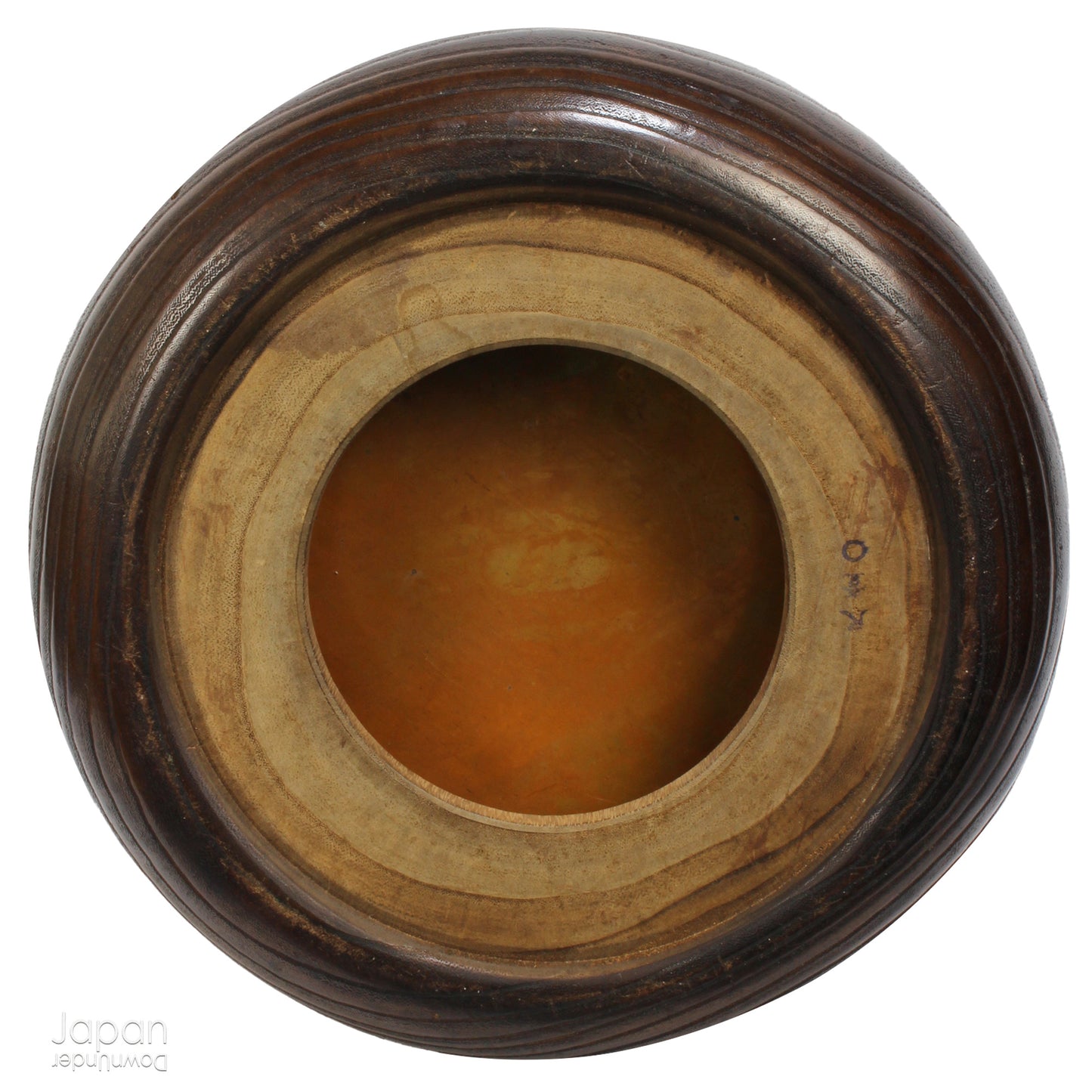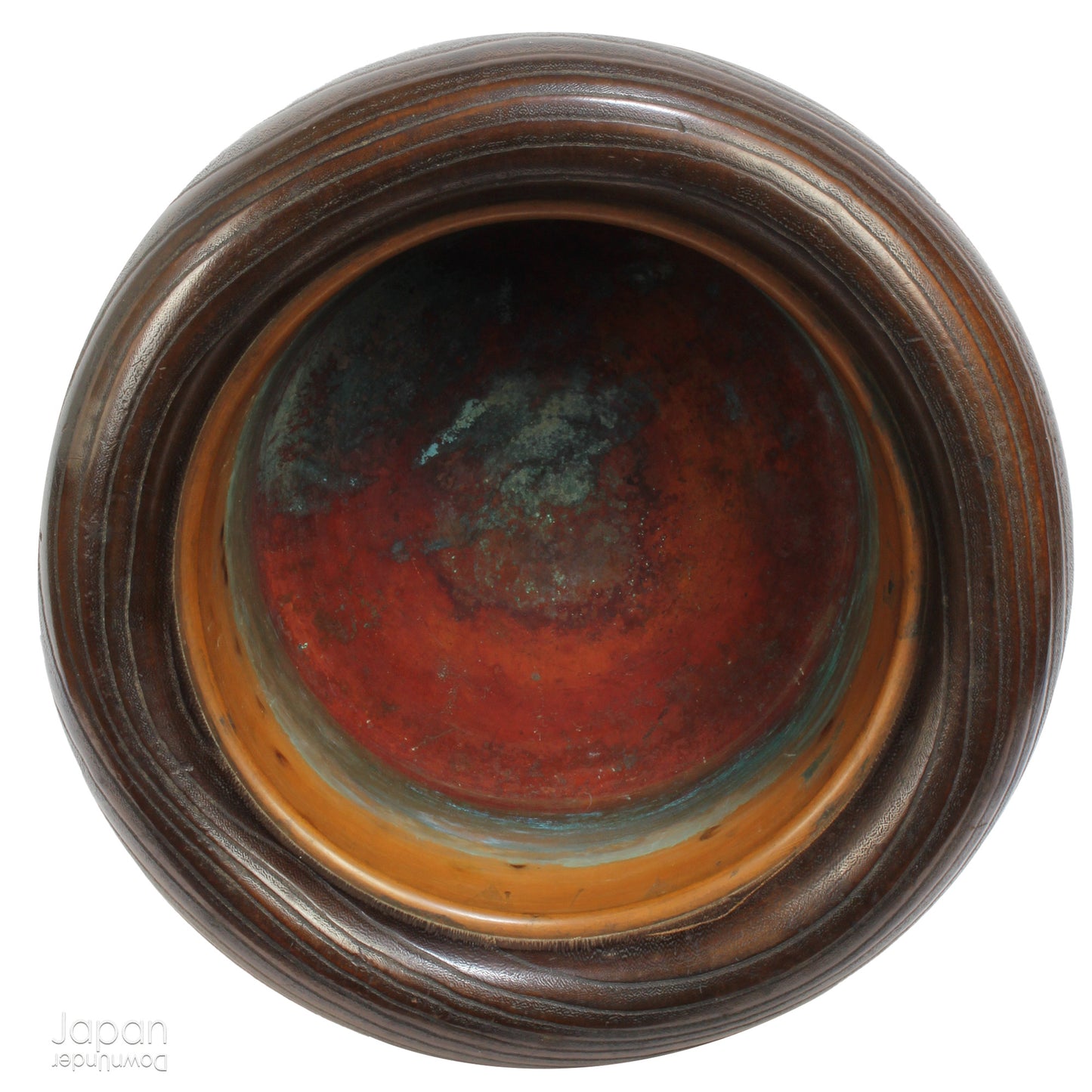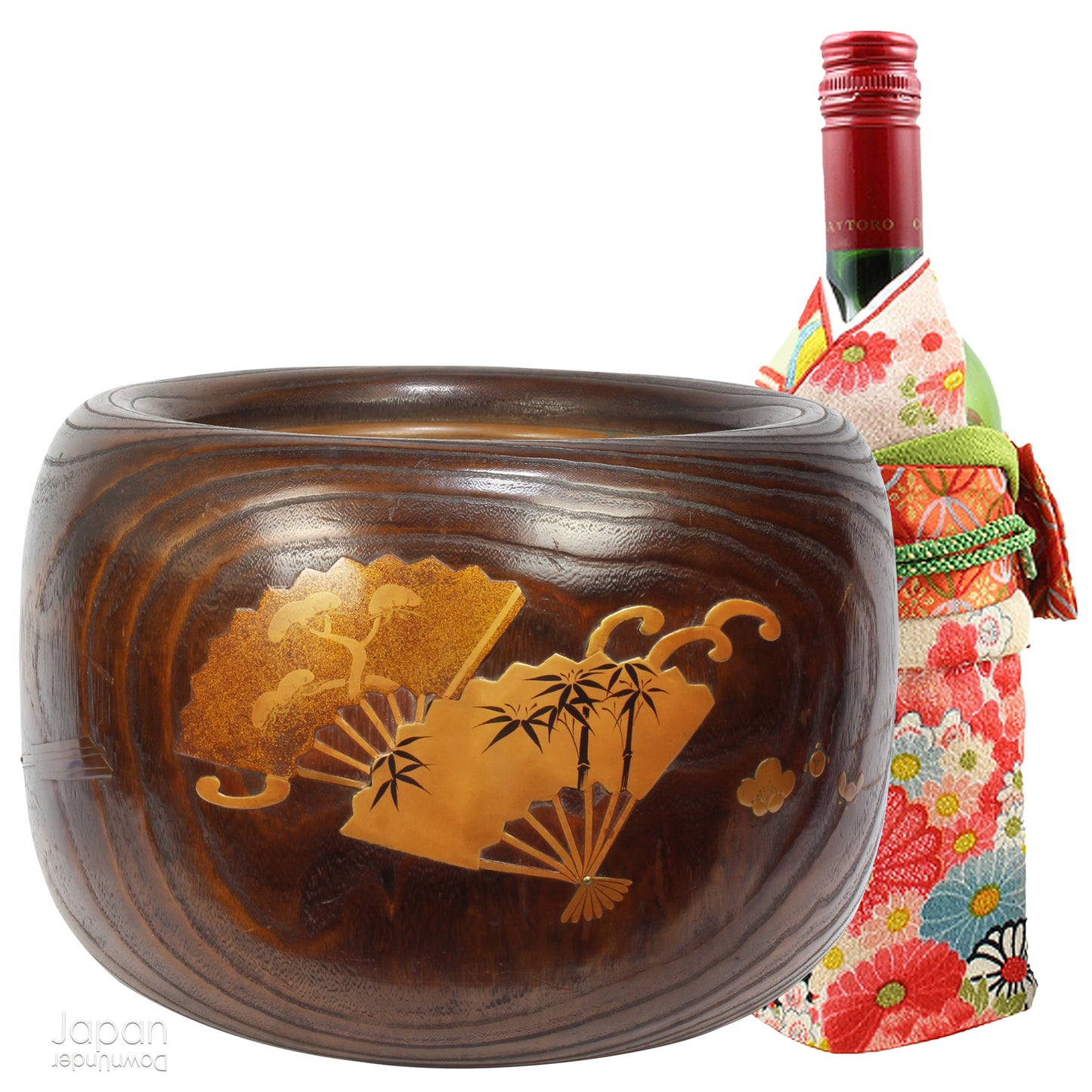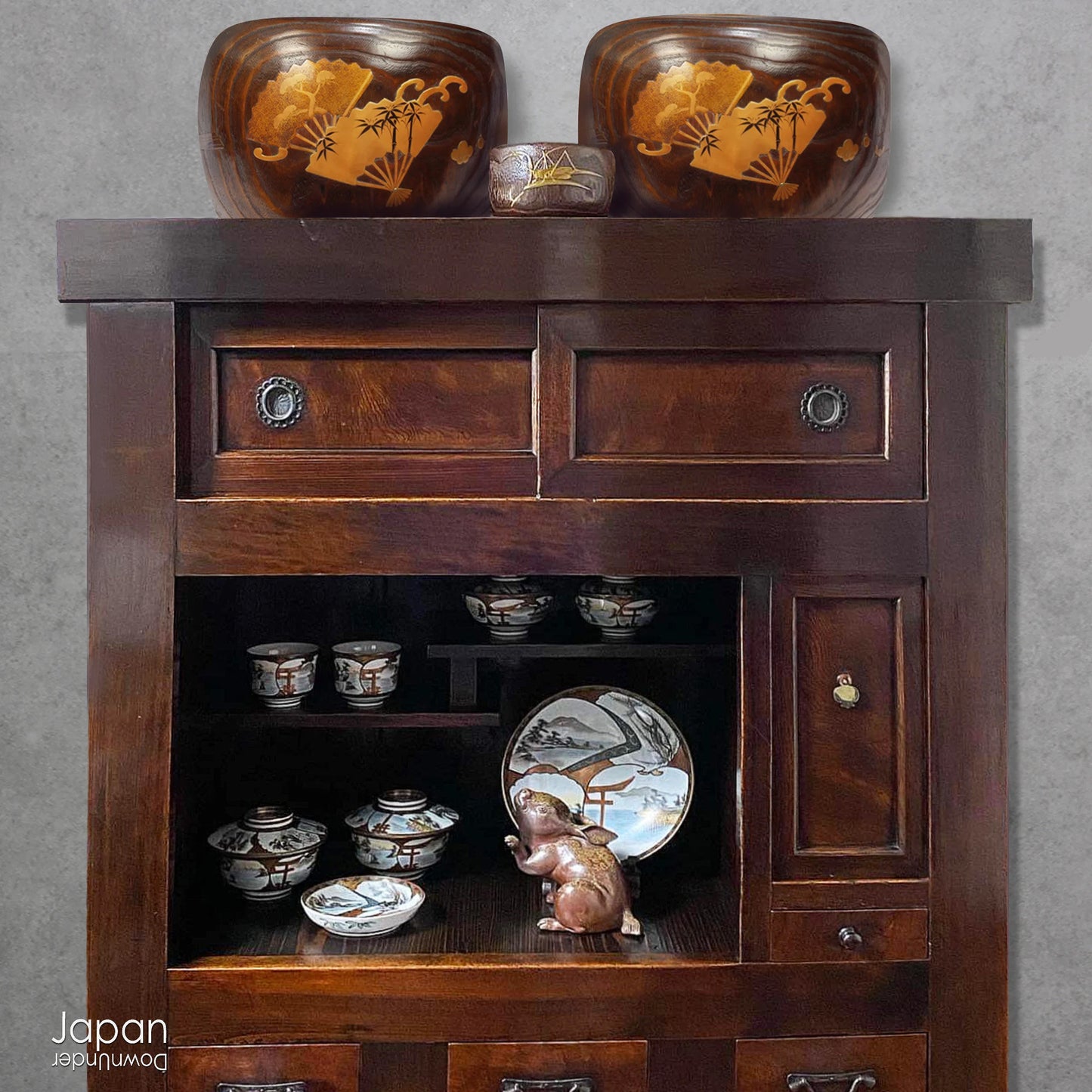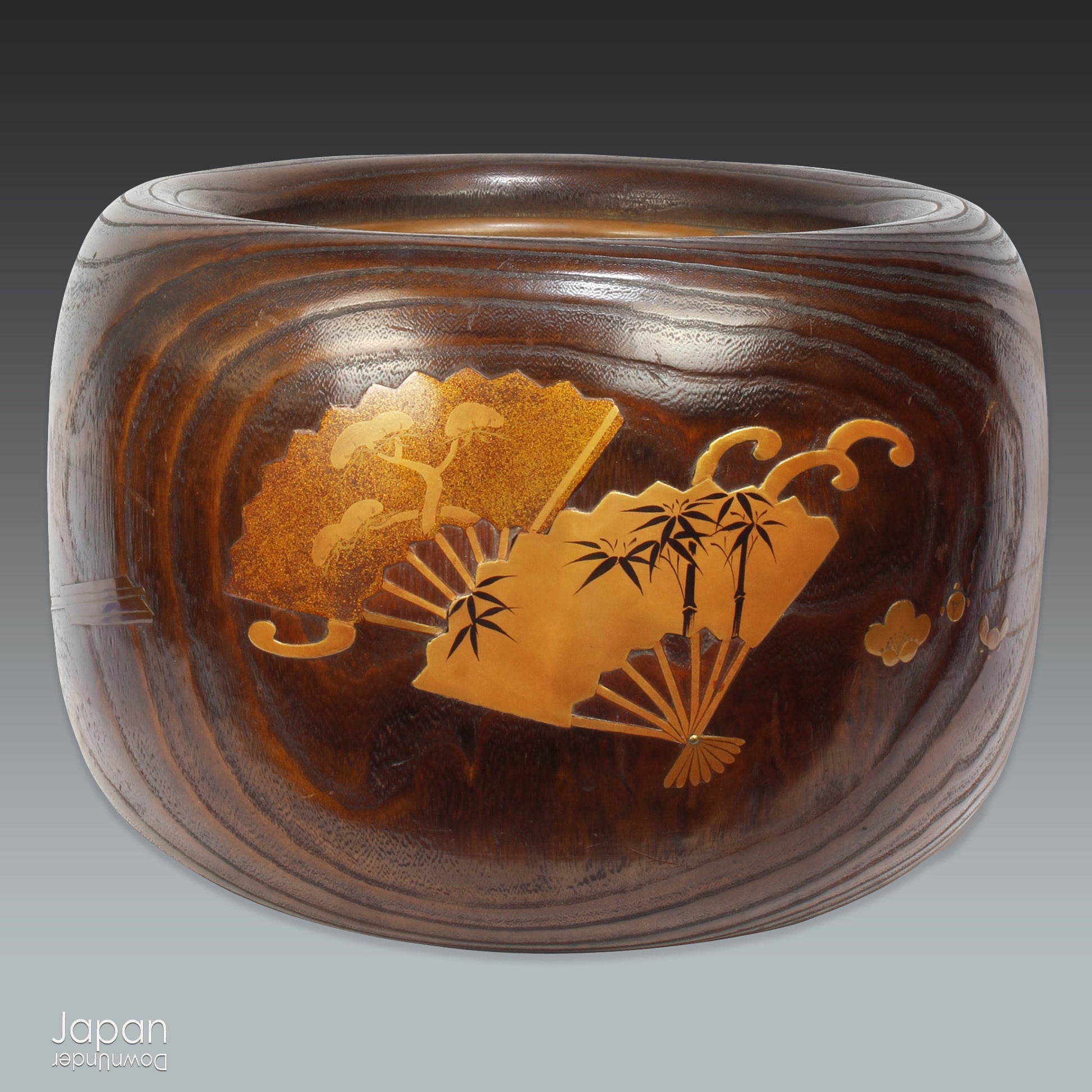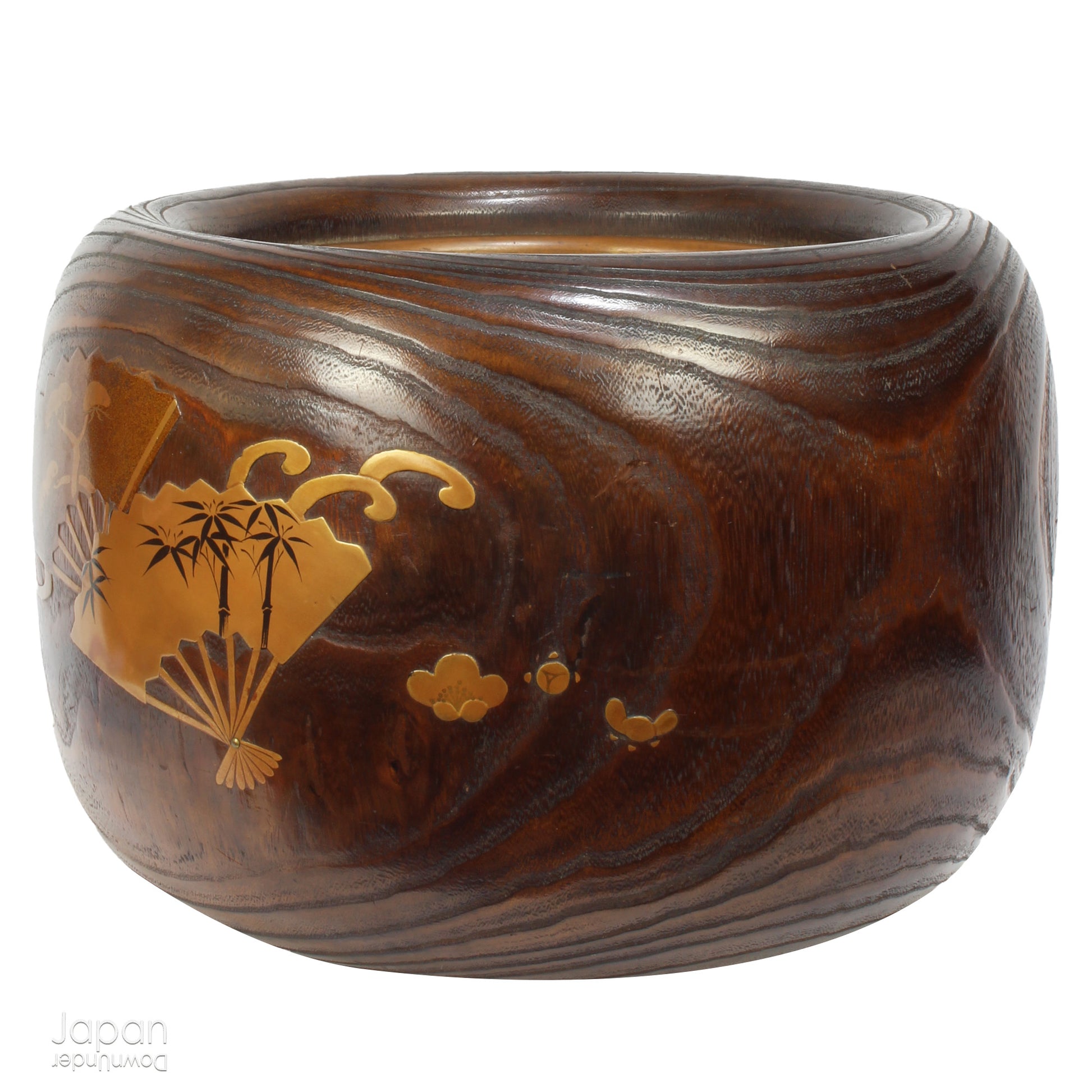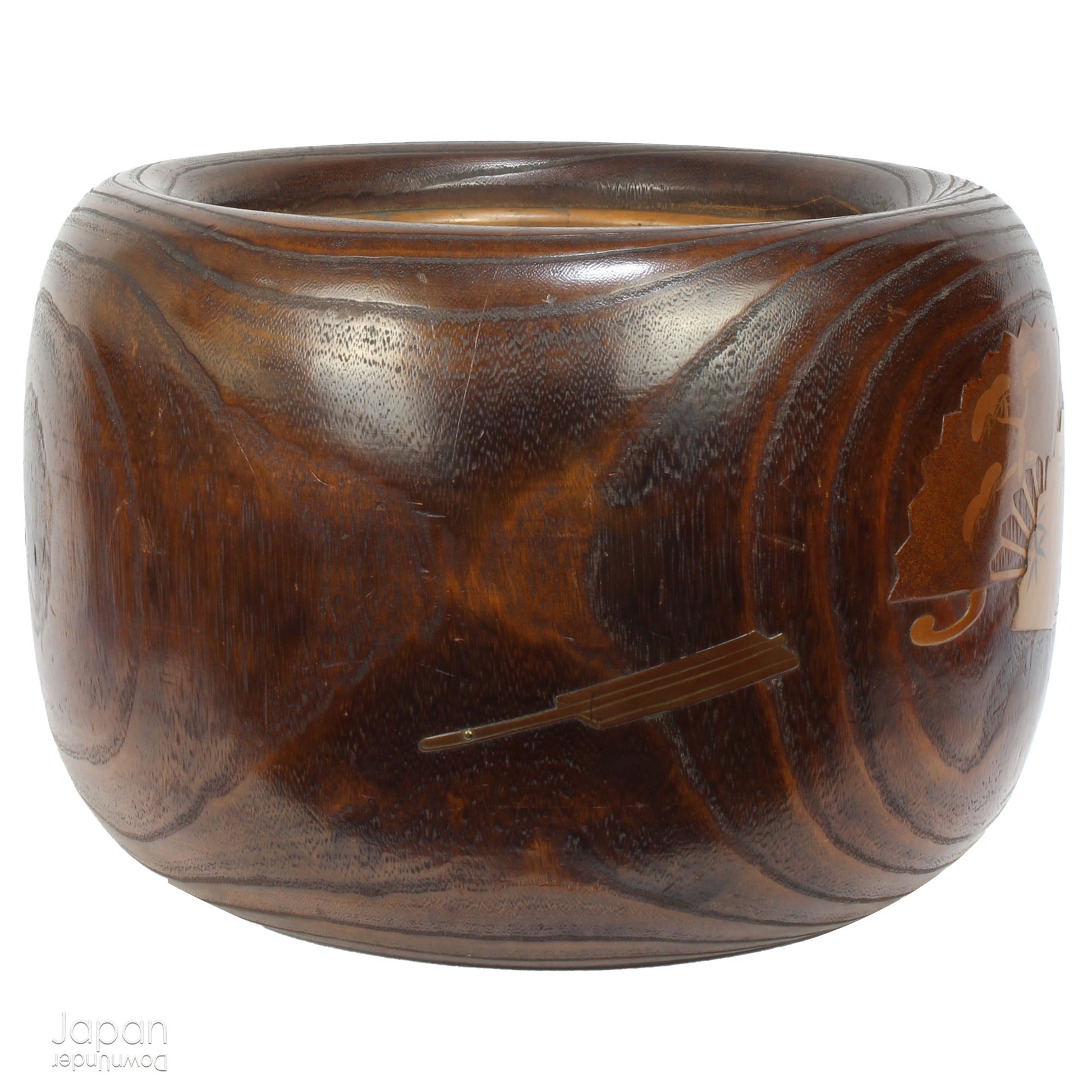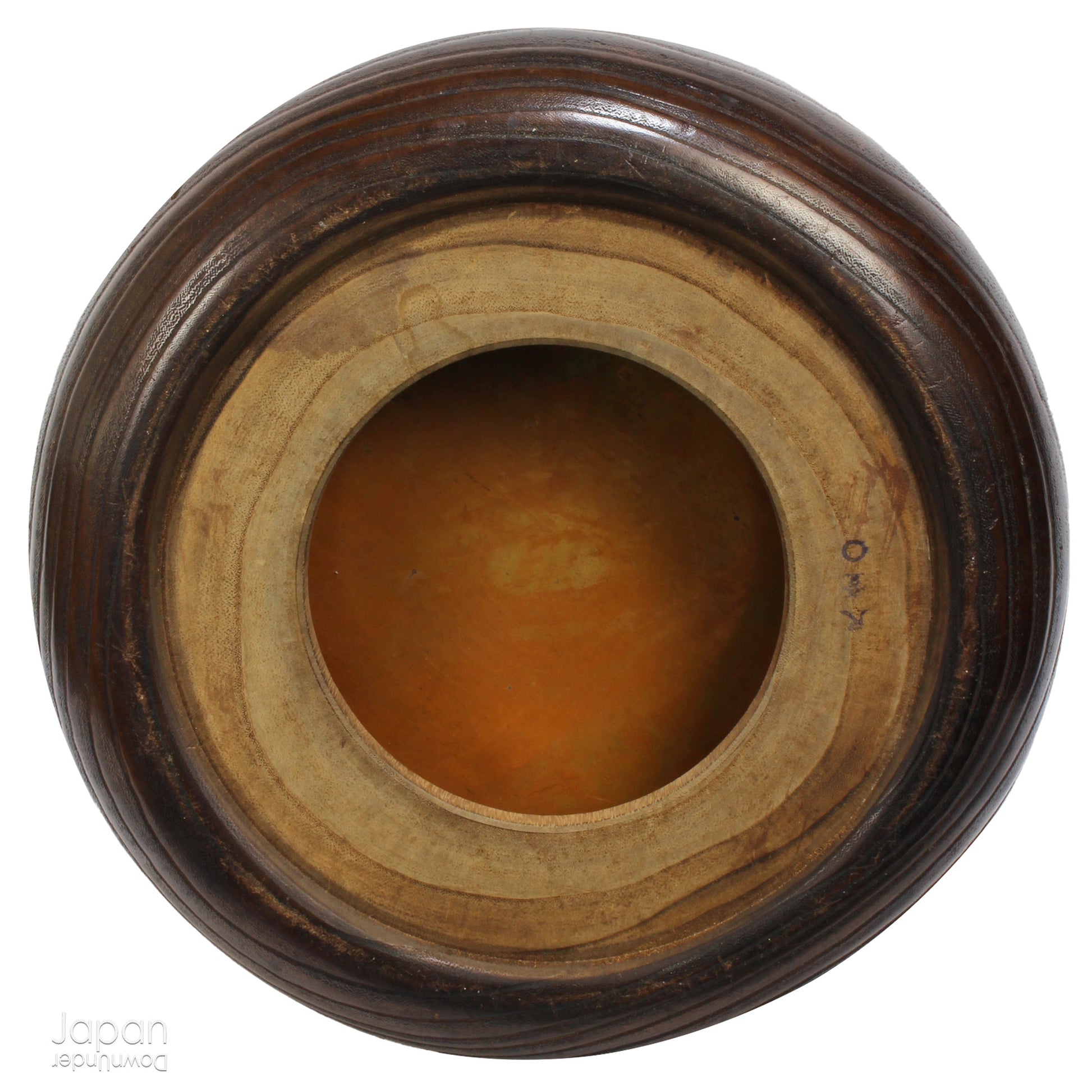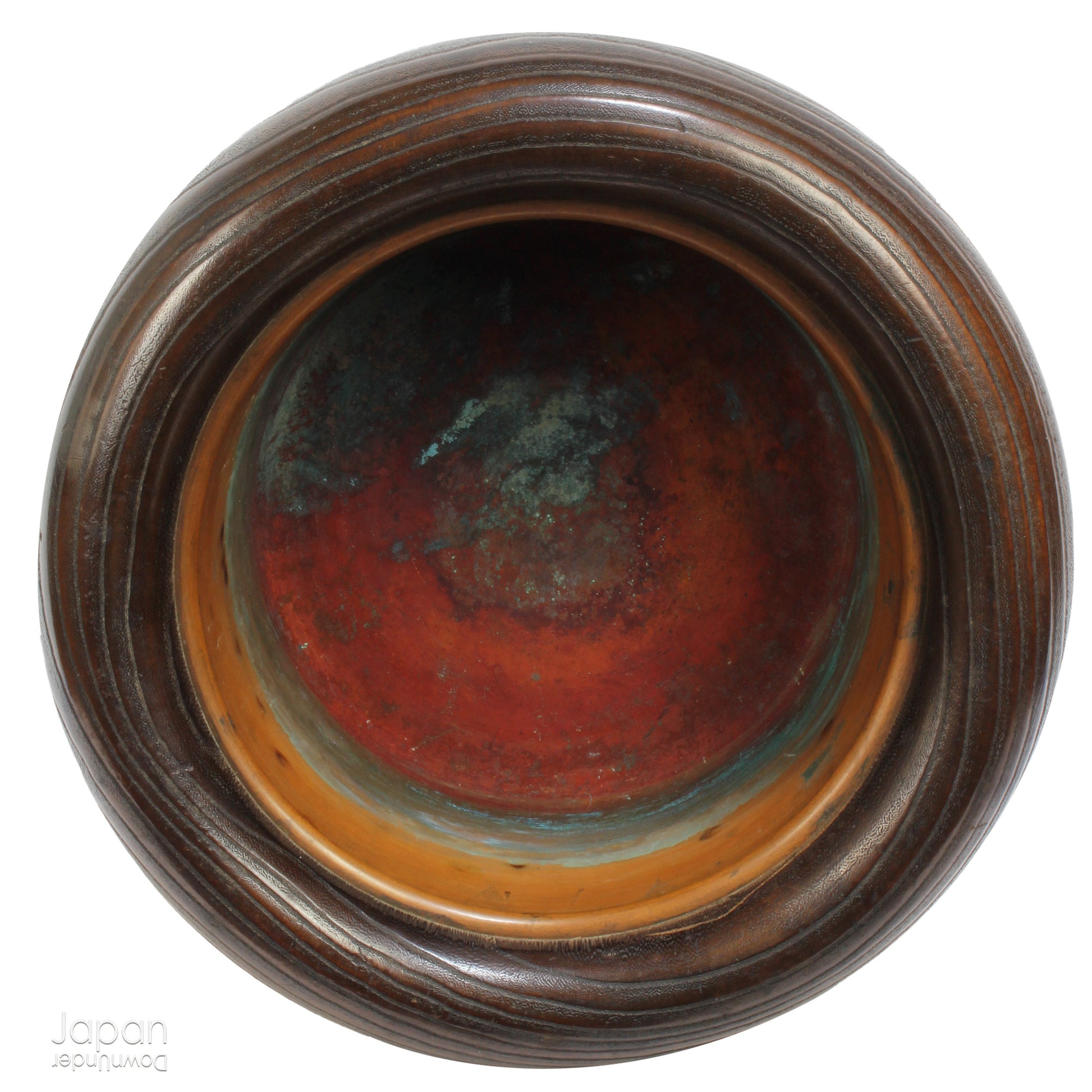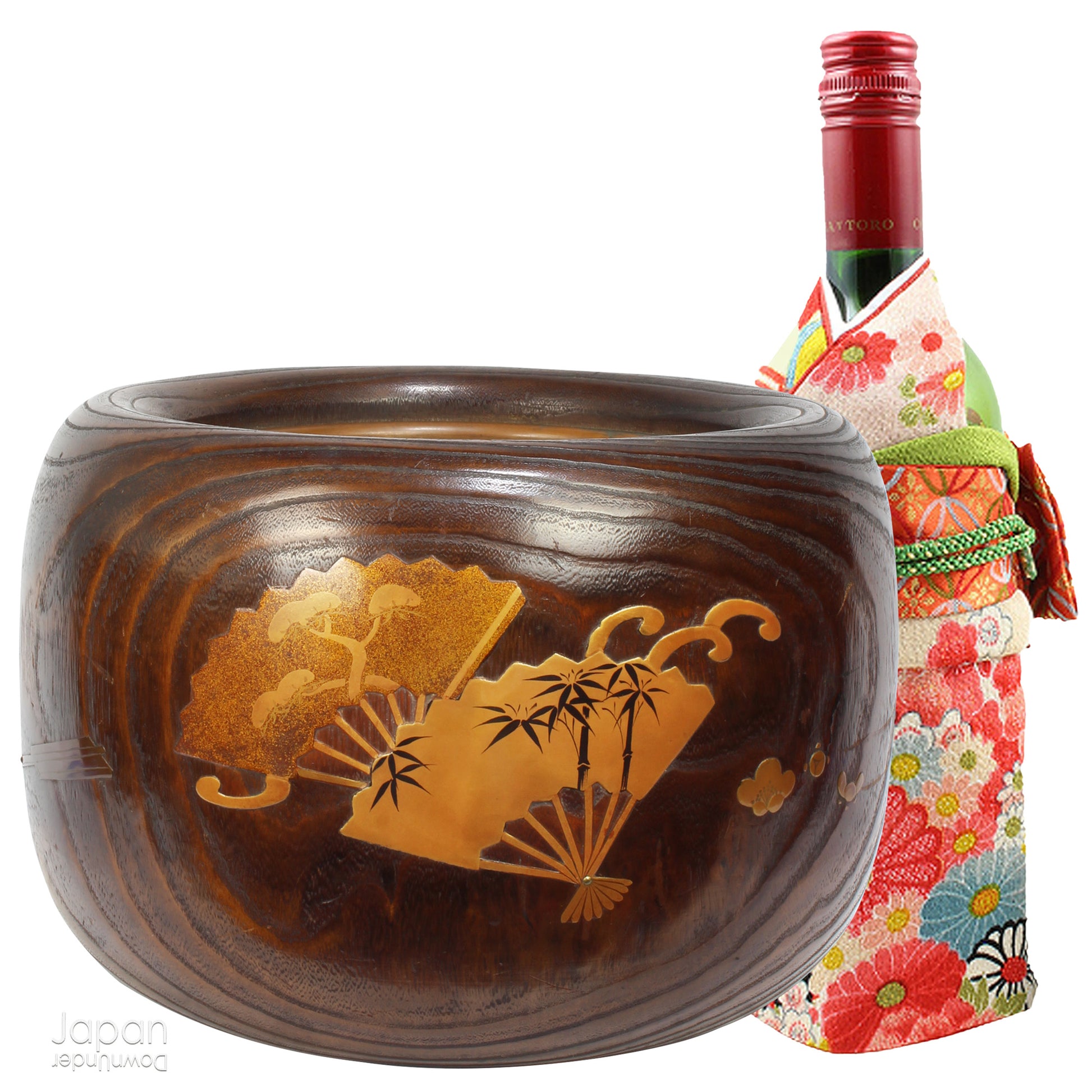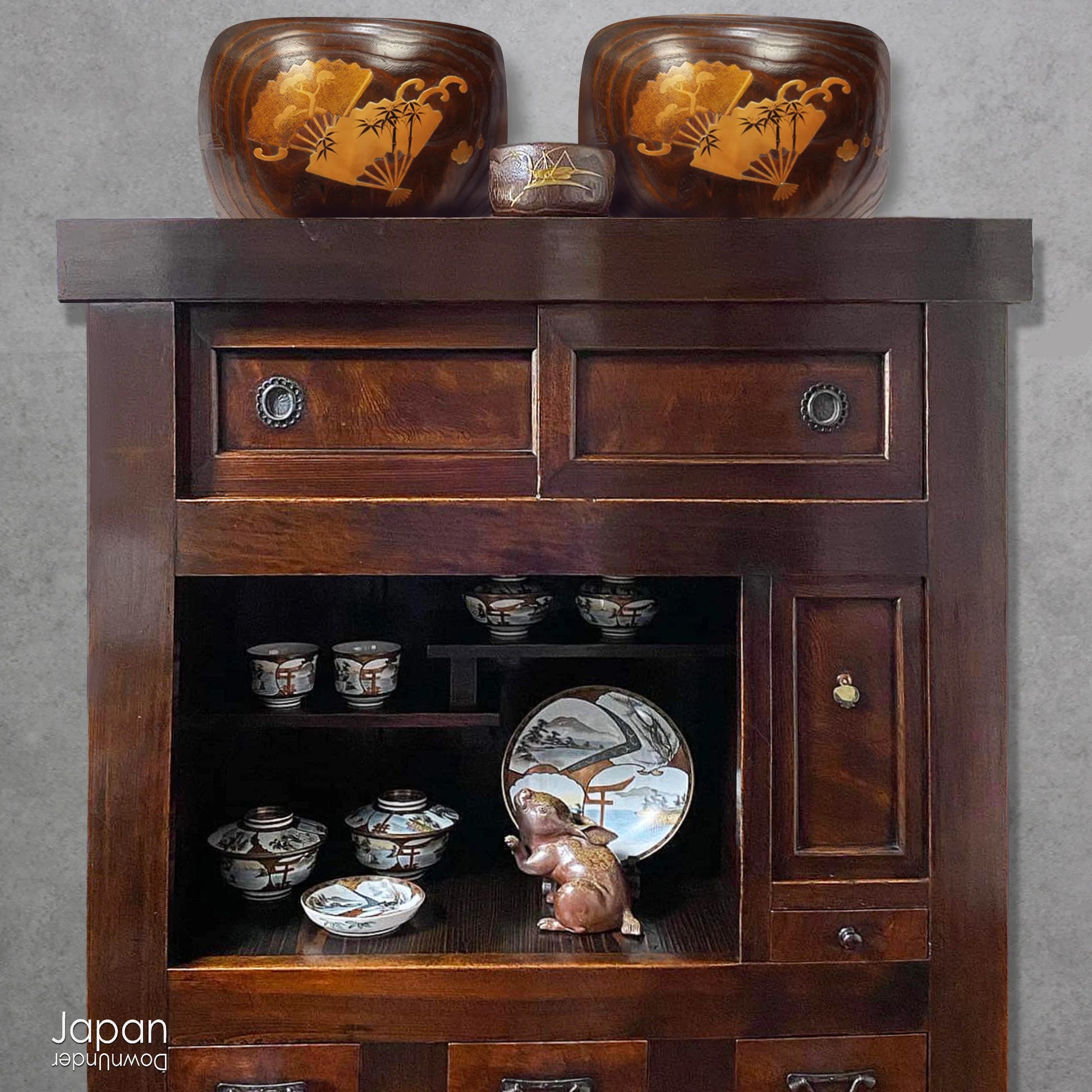JapanDownUnder
japanese antique wood pot with lacquer fans - elegant art object and vase
japanese antique wood pot with lacquer fans - elegant art object and vase
Couldn't load pickup availability
Love Japanese Style Like We Do
Infuse your home with the charm of Japanese tradition with this stunning antique hibachi heating pot. Adorned with intricate gold makie lacquer fans, this lovely piece seamlessly blends artistry and functionality, making it perfect as a decorative object, vase, or planter. A rare and beautiful find for those who appreciate vintage decor with a touch of elegance and history.
Historically used in homes, shops, and during the tea ceremony, hibachi pots were an essential part of Japanese life, not only providing warmth but also serving to heat water for tea. A kettle would be placed over the ash and hot coals, ensuring a continuous supply of hot water.
Crafted from kiri (paulownia) wood, this high-quality hibachi is carved from a solid tree trunk, hollowed out in the center. Kiri wood is not only lightweight for easy portability, but it's also heat and insect resistant, and its smooth finish is a tactile delight.
This beautiful hibachi is adorned with large, golden makie lacquered sensu (folding fans), each symbolizing prosperity and the increase of wealth. The fan design features bamboo and pine trees - two of the lucky symbols of the three motif shochikubai design. The third symbol, plum blossoms, is to the side of the fans. The shochikubai motif, associated with New Year's celebrations, represents hope, resilience, and new opportunities, bringing an aura of optimism to any space.
On the reverse side, you'll find a closed fan and at the back, gold lacquered leaves, making a striking contrast against the deep, rich brown of the wood and its natural grain.
The copper pot for holding the ash and charcoal has signs of use, with a soft tarnish that adds to its antique charm. The wooden hibachi itself is in very good condition, with no cracks or visible damage to the lacquer, and a delightful patina that speaks to its age and history.
While traditional hibachi heating pots are no longer used in their original capacity, they have become treasured pieces in Japanese folk craft (mingei) collections. This versatile object makes an ideal plant holder, vase, or an elegant standalone display piece, evoking nostalgia and a sense of timeless beauty. Whether placed atop an antique chest, displayed on a shelf, or incorporated into your living space, this hibachi is a beautiful reminder of days gone by.
(listing for one heating pot only)
- measures around 32 cm (12.6”) in diameter x 21 cm (8.3”) tall.
- weighs 2,200 gm.
SHIPPING INFORMATION
- please read our shipping notes in shipping policy.
- we use recycle packaging wherever possible and wrap for safety, rather than appearance!
ABOUT OUR VINTAGE AND ANTIQUE ITEMS
We list pieces we feel are worthy of display. There may be scratches, dents, fading and signs of wear and tear. We try to explain the condition of each item exactly, but may miss something.
Information regarding the item and it’s age is obtained from dealers and our personal research. We do our best to give you the correct information but please be aware that we cannot guarantee this information.
Please message us prior to purchase with any questions you may have about our products.
SHOCHIKUBAI - THE LUCKY PINE TREE, PLUM BLOSSOM AND BAMBOO SYMBOL.
Pine tree
A pine tree represents the ability to weather hard times. A pine tree’s roots are tenacious and will burrow deep to find their way to hold fast on even the craggiest, rock-strewn outcropping. They endure, no matter what the circumstances.
Plum blossoms
In Japan the plum tree is the first to bud and blossom in the late winter, even when its limbs may remain snow-laden: the plum gives us hope, showing us that spring and new opportunities for beauty and joy are just around the corner.
Bamboo
Bamboo finds it’s strength in knowing how to give and bend without breaking when even the strongest winds blow.
SENSU
"Sensu" (foldable fans) were created for Japanese court nobles in the 6th–9th centuries. Then, because paper was expensive, records were mostly kept on slats of wood. Historical records show someone working in the court bound the slats at one end and strung them together at the other end. This method is considered to be the beginning of the early folding fan. Soon after fans became more intricate, and symbolic meanings began to appear on them. Later fans were exported to China and then eventually travelled to Europe via India. Around the 17th century, records show the Queen of England had a hand fan like a "Sensu".
The fan is a symbol of prosperity. It spreads out when being opened and this is considered to represent the widening of wealth. It is also considered to be similar to the blooming of a flower and represents the blooming of life. The fan starts from a single point from which all the wooden slats extend out in different directions. These directions are believed to resemble the various paths we take in our life after the single point of birth.
Fans also take on many meanings depending on how they are decorated. Usually, fans have an odd number of pictures on them. The odd number is considered to bring good luck.
For birthdays, fans have pictures such as chrysanthemums, cranes, and turtles on them to wish the person a long and lucky life. A fan featuring a pair of birds symbolizes the blossoming of love. Two butterflies on a fan symbolize a happy marriage. Plum blossoms on a fan represent new beginnings, while cherry blossoms represent love of parents, wealth and good luck. Roses on a fan symbolize love while bamboo and pine trees can mean patience. A white horse symbolizes mercy, a lion strength and a carp fish represents luck and a long life.
The color of fans is also significant. Gold fans are considered to attract wealth and prosperity. While white and red fans are believed to bring good luck.
KOTATSU AND HIBACHI
The history of the kotatsu goes back to the fourteenth century and it began with the Japanese open cooking hearth, sunk into the floor, known as the irori. Charcoal was used for cooking and heating in the traditional Japanese household and it was used to heat the irori too.
Gradually a seating platform was added to the irori and it became important for both cooking and heating. A quilt was placed on top of the wooden platform, trapping the heat of the charcoal burner, keeping those seated around the hearth nice and warm. The hearth became a place where family and friends would gather to cook, eat and socialize. This hearth called, hori gotatsu was the precursor to the kotatsu.
The moveable kotatsu was created later, originating from the concept of the hori gotatsu. This kotatsu came about with the popular use of tatami matting in Japanese homes. Instead of placing the charcoal in the irori, it was placed in a pot, put inside the kotatsu on the tatami matting. This allowed the kotatsu to be moved around to places where heat was needed. This was known as the oki-gotatsu.
There were a variety of pots used for heating rooms including ceramic, wooden and metal pots of differing sizes. These pots were often made in pairs and came in various styles; beautiful wooden zelkova and paulownia pots with gold maki-e, blue and white hand painted ceramic or transfer ware pots and lacquer covered pots, to name a few. The larger pots (hibachi) were used for heating rooms and the smaller pots (te-aburi) were used as hand warmers.
The traditional role of hibachi in Japanese life was mostly to provide heat, but they were also important from a social viewpoint. The offering of tea played a significant part in Japanese hospitality and the hibachi played a role of always keeping water hot for the unannounced arrival of a guest or customer. A guest served tea was also seated closest to the hibachi for warmth in winter. Incense was sometimes placed in the coals to give off a pleasant aroma for the enjoyment of guests. In this manner a merchant and his client would conclude their business over a cup of tea. Every establishment from noodle shop to geisha house had a hibachi for the comfort of its clientele.
In the Japanese home the hibachi was important as a family gathering place. Japanese homes relied on the hibachi as a means of heat in winter, so it was near the hibachi that families talked, ate, drank tea, and slept, with the master of the house sitting the closest, sometimes smoking and drinking sake!
Nowadays, hibachi are no longer needed as a heat source, but instead have become very popular as plant holders creating a lovely interior accent and at the same time reminding us of days gone by.
MINGEI
Mingei are the tools and utensils that were used daily by the common people in Japan. They were inexpensive, simple and functional. Usually produced by hand, in large quantities, their artists were anonymous. They became representative of the local area where they were produced.
The word Mingei combines “min” meaning common people and “gei” meaning art - the art of the common people. It was coined by the Japanese philosopher Sōetsu Yanagi. He found beauty in ordinary crafts for daily use and argued that true beauty could be found only in the objects made by unknown people, in a spirit of selfless innocence and in close harmony with nature.
Share
